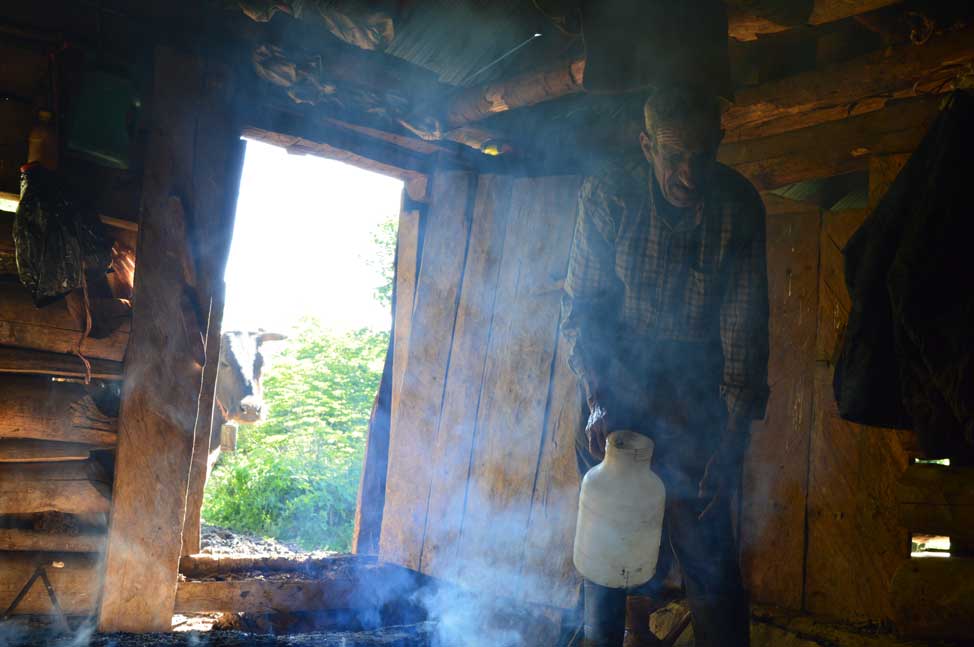Overview of the Phoenix and LiveView Card Component
The Mishka Chelekom Card component allows you to create flexible and customizable card layouts for displaying content such as images, text, and actions. It's a versatile component that can be tailored to match different design needs, providing an organized and visually appealing structure. For enhanced functionality, the Card Footer and Card Title components offer additional sections for displaying actionable elements and highlighting important information, making this module ideal for content presentation in various contexts. The Card component integrates seamlessly with Phoenix and Phoenix LiveView.
This Phoenix LiveView component offers a wide range of customization options, including support for different sizes, colors, and variants. You can add media, text, and buttons, adjust the padding and spacing, and even combine multiple cards for a more detailed layout. These features make the Card component a highly adaptable tool that can easily fit into any design system while boosting the visual presentation of content.
By using the class prop, you can apply custom classes or Tailwind CSS classes to customize the appearance and behavior of the components, allowing for flexible design changes.
Base color and variant
The base variant and color offers a solid white background in light mode and a dark gray background in dark mode. These colors remain consistent across modes when using the default variant. The component also includes a border that matches the default variant and color styling.
<.card> <.card_content class="flex items-center flex-col justify-center h-full"> <h2>Camping Responsibly to Preserve Nature’s Beauty</h2> <.button_link size="extra_small">Read more</.button_link> </.card_content> </.card>
Default Variant
The default style of the Mishka Chelekom card applies a solid background and border that change based on user interaction, making it perfect for delivering important notifications. With just a single setting, you can select from a range of color options, ensuring easy customization to match various design styles. Default variant have also white and dark colors which are the same colors in the dark and light mode.
<.card variant="default" color="natural"></.card> <.card variant="default" color="white"></.card> <.card variant="default" color="dark"></.card> <.card variant="default" color="primary"></.card> <.card variant="default" color="secondary"></.card> <.card variant="default" color="success"></.card> <.card variant="default" color="warning"></.card> <.card variant="default" color="danger"></.card> <.card variant="default" color="info"></.card> <.card variant="default" color="silver"></.card> <.card variant="default" color="misc"></.card> <.card variant="default" color="dawn"></.card>
Outline Variant
The outline style of the Mishka Chelekom card features a border. Using a single setting, you can choose from various color variants to suit your design needs.
<.card color="natural" variant="outline"></.card> <.card color="primary" variant="outline"></.card> <.card color="secondary" variant="outline"></.card> <.card color="success" variant="outline"></.card> <.card color="warning" variant="outline"></.card> <.card color="danger" variant="outline"></.card> <.card color="info" variant="outline"></.card> <.card color="silver" variant="outline"></.card> <.card color="misc" variant="outline"></.card> <.card color="dawn" variant="outline"></.card>
Shadow Variant
The shadow variant of the Mishka Chelekom card is similar to the default variant, but it also includes a subtle shadow along with a border and white background in light mode.
<.card color="natural" variant="shadow"></.card> <.card color="primary" variant="shadow"></.card> <.card color="secondary" variant="shadow"></.card> <.card color="success" variant="shadow"></.card> <.card color="warning" variant="shadow"></.card> <.card color="danger" variant="shadow"></.card> <.card color="info" variant="shadow"></.card> <.card color="silver" variant="shadow"></.card> <.card color="misc" variant="shadow"></.card> <.card color="dawn" variant="shadow"></.card>
Bordered Variant
The Bordered variant of the Mishka Chelekom card has lighter background and a border. Bordered variant have also white and dark colors which are the same colors in the dark and light mode.
<.card color="natural" variant="bordered"></.card> <.card color="white" variant="bordered"></.card> <.card color="dark" variant="bordered"></.card> <.card color="primary" variant="bordered"></.card> <.card color="secondary" variant="bordered"></.card> <.card color="success" variant="bordered"></.card> <.card color="warning" variant="bordered"></.card> <.card color="danger" variant="bordered"></.card> <.card color="info" variant="bordered"></.card> <.card color="silver" variant="bordered"></.card> <.card color="misc" variant="bordered"></.card> <.card color="dawn" variant="bordered"></.card>
Transparent Variant
The transparent variant of the Mishka Chelekom card is similar to the default variant, but without border and background color.
<.card color="natural" variant="transparent"></.card> <.card color="primary" variant="transparent"></.card> <.card color="secondary" variant="transparent"></.card> <.card color="success" variant="transparent"></.card> <.card color="warning" variant="transparent"></.card> <.card color="danger" variant="transparent"></.card> <.card color="info" variant="transparent"></.card> <.card color="silver" variant="transparent"></.card> <.card color="misc" variant="transparent"></.card> <.card color="dawn" variant="transparent"></.card>
Gradient Variant
The gradient variant of the Mishka Chelekom card has gradients in various colors.
<.card color="natural" variant="gradient"></.card> <.card color="primary" variant="gradient"></.card> <.card color="secondary" variant="gradient"></.card> <.card color="success" variant="gradient"></.card> <.card color="warning" variant="gradient"></.card> <.card color="danger" variant="gradient"></.card> <.card color="info" variant="gradient"></.card> <.card color="silver" variant="gradient"></.card> <.card color="misc" variant="gradient"></.card> <.card color="dawn" variant="gradient"></.card>
Rounded prop in Phoenix LiveView card Component
The rounded prop offers values like
"extra_small"
,
"small"
,
"medium"
,
"large"
, and
"extra_large"
. These values control the border radius of the blcokquotes, allowing for different levels of rounding from subtle to more pronounced corners, depending on the design needs.
<.card> <.card_media src="/path" /> <.overlay color="dark" opacity="opaque"> <.card_content class="flex items-center flex-col justify-center h-full"> <h2>Camping Responsibly to Preserve Nature’s Beauty</h2> <.button_link size="extra_small">Read more</.button_link> </.card_content> </.overlay> </.card>
Card with overlay
If you want to create a card with overlayer, you can simply use Mishka Chelekom's
Overlay
component alongside with
card_media
of card and put it in the card component. This allows you to create interactive cards with overlay effects when hovering or focusing on the content.
<.card rounded="extra_small"></.card> <.card rounded="small"></.card> <.card rounded="medium"></.card> <.card rounded="large"></.card> <.card rounded="extra_large"></.card>
Border prop
The border prop offers values like
"extra_small"
,
"small"
,
"medium"
,
"large"
, and
"extra_large"
. These values control the border size of the cards, allowing you to adjust the thickness to suit your design. Additionally, you can use boolean props such as
left_border
,
right_border
,
hide_border
, and
full_border
to change the border position, add, or remove borders as needed for greater customization.
<.card border="extra_small"></.card> <.card border="small"></.card> <.card border="medium"></.card> <.card border="large"></.card> <.card border="extra_large"></.card>
Space prop
The space prop offers values such as
"extra_small"
,
"small"
,
"medium"
,
"large"
, and
"extra_large"
. These values control the vertical spacing between elements within the cards.
<.card space="extra_small"></.card> <.card space="small"></.card> <.card space="medium"></.card> <.card space="large"></.card> <.card space="extra_large"></.card>
Padding prop
The padding prop offers values such as
"extra_small"
,
"small"
,
"medium"
,
"large"
, and
"extra_large"
. These values control the padding around the content inside the cards.
<.card padding="extra_small"></.card> <.card padding="small"></.card> <.card padding="medium"></.card> <.card padding="large"></.card> <.card padding="extra_large"></.card>
Card font weight prop
The
font_weight
prop controls the font weight of the text. By setting this prop, you can determine how bold or light the text appears within the title section. The default value is
font-normal
. You can customize this value to apply different font weights, such as making the text lighter or bolder, depending on the visual style and emphasis you want to create for the card's title. This provides flexibility in ensuring the title stands out appropriately within the overall card layout.
<.card class="font-thin"></.card> <.card class="font-extrasilver"></.card> <.card class="font-silver"></.card> <.card class="font-normal"></.card> <.card class="font-medium"></.card> <.card class="font-semibold"></.card> <.card class="font-bold"></.card> <.card class="font-extrabold"></.card> <.card class="font-black"></.card>
Card content component
The
card_content
component is a flexible and customizable section within the
Card
component, designed to display the main content of your card. It can hold any type of content, including text, images, and other elements, making it ideal for showcasing detailed information or media. The
card_content
component supports customizable padding, spacing, and layout options, allowing you to tailor the presentation to fit your design needs. Whether you're creating product cards, profiles, or informational sections,
card_content
ensures a structured and visually appealing layout.
<.card class="your_classes"> <.card_content> <h3> This is a small text inside the h3. </h3> <div> Another small text inside the first div. </div> <.button size="small" color="danger"> a button within card content </.button> </.card_content> </.card>
Card content space prop
The
space
attribute in the
card_content
component controls the spacing between items within the card content. By using predefined size values like
extra_small
,
small
,
medium
, and others, you can easily adjust the vertical space between elements inside the card. This allows for better visual organization and layout consistency, helping to create a clean and structured appearance within the card. The default spacing is set to
extra_small
, but it can be modified to fit the design needs of your project.
<.card class="your_classes"> <.card_content space="extra_small" class="your_classes"> <h3>This is a small text inside the h3.</h3> </.card_content> </.card> <.card class="your_classes"> <.card_content space="small" class="your_classes"> <h3>This is a small text inside the h3.</h3> </.card_content> </.card> <.card class="your_classes"> <.card_content space="medium" class="your_classes"> <h3>This is a small text inside the h3.</h3> </.card_content> </.card> <.card class="your_classes"> <.card_content space="large" class="your_classes"> <h3>This is a small text inside the h3.</h3> </.card_content> </.card> <.card class="your_classes"> <.card_content space="extra_large" class="your_classes"> <h3>This is a small text inside the h3.</h3> </.card_content> </.card>
Card content padding prop
The
padding
attribute in the
card_content
component allows you to control the inner padding of the content, adjusting the space between the content and the edges of the card. With predefined values such as
extra_small
,
small
,
medium
,
large
, and
extra_large
, you can easily customize the padding to suit your design. Additionally, the
none
option allows for no padding if you prefer a tighter layout. The default value for padding is set to
none
, but it can be adjusted to ensure the appropriate spacing for various content types. The padding_size helper function converts the padding size into corresponding Tailwind CSS classes for consistent styling.
<!--When you want to add padding to card contetn set card padding to none--> <.card class="your_classes" padding="none"> <.card_content padding="extra_small" class="your_classes"></.card_content> </.card> <.card class="your_classes" padding="none"> <.card_content padding="small" class="your_classes"></.card_content> </.card> <.card class="your_classes" padding="none"> <.card_content padding="medium" class="your_classes"></.card_content> </.card> <.card class="your_classes" padding="none"> <.card_content padding="large" class="your_classes"></.card_content> </.card> <.card class="your_classes" padding="none"> <.card_content padding="extra_large" class="your_classes"></.card_content> </.card> <.card class="your_classes" padding="none"> <.card_content padding="none " class="your_classes"></.card_content> </.card>
Card title component
The
padding
attribute in the
card_content
component allows you to control the inner padding of the content, adjusting the space between the content and the edges of the card. With predefined values such as
extra_small
,
small
,
medium
,
large
, and
extra_large
, you can easily customize the padding to suit your design. Additionally, the
none
option allows for no padding if you prefer a tighter layout. The default value for padding is set to
none
, but it can be adjusted to ensure the appropriate spacing for various content types. The padding_size helper function converts the padding size into corresponding Tailwind CSS classes for consistent styling.
<.card class="your_card_classes"> <!--Put any text or HTML Between title component--> <.card_title class="your_classes"></.card_title> </.card>
Card title prop
The
title
prop in the
card_title
component specifies the main text for the card's title. It provides a clear and concise way to label the content of the card, ensuring a visually distinct header. By default, it is nil, but when set, it displays the provided title text, making it easy to add context and structure to your card's content.
<.card class="your_card_classes"> <.card_title title="Mishka Chelekom card title" class="your_classes" /> </.card>
Card title component title prop
The
icon
prop in the
card_title
component allows you to display an icon alongside the title text. This prop enhances the visual appeal of the card by adding a recognizable symbol or graphic element next to the title, helping to reinforce the meaning or purpose of the card. By default, the
icon
prop is set to nil, but when provided, it integrates seamlessly with the title to create a more engaging and informative card header.
<.card class="your_card_classes"> <!--Use any heroicons.com icons inside icon prop--> <.card_title title="Card title prop" icon="hero-home" /> </.card>
Card title component icon prop
The
position
prop in the
card_title
component allows you to control the alignment of the content within the card's title section. It supports values like
start
,
end
,
center
,
between
, and
around
, offering flexibility in how the title and any additional elements (like icons) are positioned. The default value is
start
, which aligns content to the left, but this can be adjusted to suit different design needs. For instance, using
center
will center the content, while
between
ensures even spacing between items within the title section, giving you full control over the layout of your card headers.
<.card class="your_card_classes"> <.card_title title="Mishka Chelekom card title prop" position="start" /> </.card> <.card class="your_card_classes"> <.card_title title="Mishka Chelekom card title prop" position="center" /> </.card> <.card class="your_card_classes"> <.card_title title="Mishka Chelekom card title prop" position="end" /> </.card> <.card class="your_card_classes"> <.card_title title="Mishka Chelekom card title prop" position="between" /> </.card> <.card class="your_card_classes"> <.card_title title="Mishka Chelekom card title prop" position="around" /> </.card>
Card title component size prop
The
size
prop in the
card_title
component controls the overall size of the elements within the card's title section, affecting the font size, padding, and icon dimensions. The available sizes range from
extra_small
to
extra_large
, with the default being
large
. This allows you to tailor the visual prominence of the title based on the card's context or design requirements. For instance, using
small
will make the title more compact with smaller text and icon sizes, while
extra_large
will provide a more prominent and bold appearance. The flexibility of the
size
prop ensures that the title can seamlessly fit into any design layout, whether for compact cards or large, impactful headers.
<.card class="your_classes"> <.card_content size="extra_small" class="your_classes"></.card_content> </.card> <.card class="your_classes"> <.card_content size="small" class="your_classes"></.card_content> </.card> <.card class="your_classes"> <.card_content size="medium" class="your_classes"></.card_content> </.card> <.card class="your_classes"> <.card_content size="large" class="your_classes"></.card_content> </.card> <.card class="your_classes"> <.card_content size="extra_large" class="your_classes"></.card_content> </.card>
Card title component padding prop
The
padding
prop in the
card_title
component allows you to control the padding inside the title section. By adjusting the padding, you can control the space between the title content and the edges of the card, ensuring it fits well within the overall card design. The default value is
none
, meaning there is no extra padding applied, but you can modify this to add more space if needed, creating a cleaner, more spacious layout for the title. This flexibility helps you tailor the card title's appearance based on the design requirements of your application.
<!--When you want to add padding to card title set card padding to none--> <.card class="your_classes" padding="none"> <.card_content padding="extra_small" class="your_classes"></.card_content> </.card> <.card class="your_classes" padding="none"> <.card_content padding="small" class="your_classes"></.card_content> </.card> <.card class="your_classes" padding="none"> <.card_content padding="medium" class="your_classes"></.card_content> </.card> <.card class="your_classes" padding="none"> <.card_content padding="large" class="your_classes"></.card_content> </.card> <.card class="your_classes" padding="none"> <.card_content padding="extra_large" class="your_classes"></.card_content> </.card>
Card title component font weight prop
The
font_weight
prop in the
card_title
component controls the font weight of the title text. By setting this prop, you can determine how bold or light the text appears within the title section. The default value is
font-semibold
, giving the title a moderately bold appearance. You can customize this value to apply different font weights, such as making the text lighter or bolder, depending on the visual style and emphasis you want to create for the card's title. This provides flexibility in ensuring the title stands out appropriately within the overall card layout.
<.card> <.card_title title="Title" class="font-thin" /> </.card> <.card> <.card_title title="Title" class="font-extrasilver" /> </.card> <.card> <.card_title title="Title" class="font-silver" /> </.card> <.card> <.card_title title="Title" class="font-normal" /> </.card> <.card> <.card_title title="Title" class="font-medium" /> </.card> <.card> <.card_title title="Title" class="font-semibold" /> </.card> <.card> <.card_title title="Title" class="font-bold" /> </.card> <.card> <.card_title title="Title" class="font-extrabold" /> </.card> <.card> <.card_title title="Title" class="font-black" /> </.card>
Card media component
The
card_media
component is designed to display media elements, such as images, within a card. It supports attributes like
src
for the image source and
alt
for a descriptive alternative text, ensuring accessibility and context for the media. The component provides flexibility through the
rounded
prop, which allows you to customize the border radius of the image, ensuring it fits well with different design aesthetics. Additionally, the
class
prop allows further customization, enabling you to apply custom styles or Tailwind CSS classes to control the appearance of the media. This component makes it easy to include responsive images or other media types in your card layout, enhancing the visual appeal and user experience.
<.card> <.card_media src="/path"/> <.card_content> <!--Content goes here--> </.card_content> </.card>
Using video as media
By using the Mishka Chelekom video component, you can easily include videos as media in your project. Simply use the video component inside a card, and there you have it—a card with video media!
<.card> <.video controls> <:source src="/path" type="video/mp4" /> <:source src="/path" type="video/webp" /> </.video> <.card_content> Card Content </.card_content> </.card>
Card media src prop
The
src
prop in the
card_media
component is used to define the media source, such as the URL of the image that will be displayed inside the card. This prop is required, meaning the component will not function properly without specifying a valid media link. The
src
prop ensures that the appropriate media is rendered, whether it be an image or other media types, allowing you to visually enhance your card component with relevant content. By specifying the source, you enable the
card_media
component to seamlessly integrate media into your card's layout.
<.card> <.card_media src="/path" /> </.card>
Card media alt prop
The
alt
prop in the
card_media
component provides a text description for the media being displayed, such as an image. This prop is important for accessibility, as it ensures that users who cannot view the image, including those using screen readers, can understand the content through the descriptive text. Additionally, the
alt
prop improves SEO by offering alternative text that can be indexed by search engines. While it's not required, it's highly recommended to include meaningful descriptions in the
alt
prop to enhance both accessibility and search visibility.
<.card> <.card_media src="/path" alt="card_image" /> </.card>
Card media rounded prop
The
rounded
prop in the
card_media
component controls the border radius of the media, allowing you to adjust how rounded the edges of the image or media element appear. With values ranging from sizes like
extra_small
to
extra_large
, and the option for no rounding (default is nil), you can customize the appearance to fit different design styles. Whether you want sharp corners or smooth, rounded edges, the
rounded
prop gives you flexibility in defining the look and feel of the media within your card layout.
<.card> <.card_content> <.card_media src="/path" rounded="extra_small" /> <.card_media src="/path" rounded="small" /> <.card_media src="/path" rounded="medium" /> <.card_media src="/path" rounded="large" /> <.card_media src="/path" rounded="extra_large" /> </.card_content> </.card>
Card footer component
The
card_footer
component is used to define the footer section of a card, providing a space at the bottom for additional content such as actions, links, or supplementary information. It supports flexible customization options, including the ability to control the padding with the
padding
prop, ensuring the footer fits well within the overall card layout. You can also add custom CSS classes via the
class
prop to style the footer as needed. The footer acts as a container for nested content, allowing you to render any content inside it by utilizing the
inner_block
. This makes it a versatile component for including actions like buttons, text, or other elements that complement the card's content.
<.card> <.card_footer padding="large"> Contne inside footer goes here </.card_footer> </.card>
Card footer padding prop
The
padding
prop in the
card_footer
component controls the amount of space between the content inside the footer and its edges. You can adjust the padding by selecting from predefined sizes like
extra_small
,
small
,
medium
, or by choosing
none
to remove padding entirely. This allows for flexible design adjustments, ensuring the footer’s content is either closely aligned with the container or spaced out according to the desired visual structure. The default value is set to
none
, but it can be customized to fit the layout needs of your card component.
<.card> <.card_footer padding="large"> Contne inside footer goes here </.card_footer> </.card>
Example of using card components
<.card padding="small" rounded="large"> <.card_title class="flex items-center gap-2 justify-between"> <.link navigate="/path">Mishka Chelekom</.link> </.card_title> <.hr /> <.card_content space="large" class="text-sm"> <.card_media rounded="large" src="/path" rounded="large" alt=""/> <p>Descriptions</p> <p>Descriptions</p> <div class="grid grid-cols-3 gap-2"> <.card_media src="/path" rounded="large" alt=""/> <.card_media src="/path" rounded="large" alt=""/> <.card_media src="/path" rounded="large" alt=""/> </div> </.card_content> <.hr /> <.card_footer > <.button class="w-full" color="info">See more</.button> </.card_footer> </.card>







